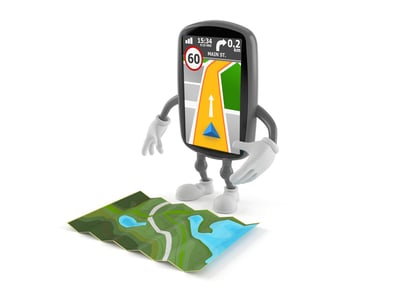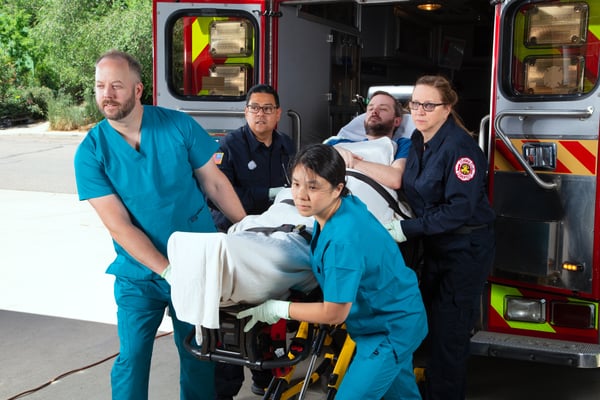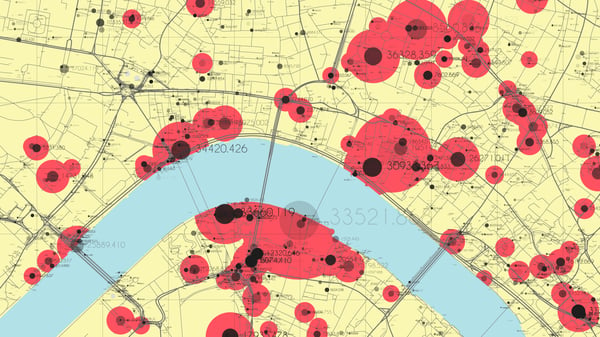4 Must-have Data Points for Dispatch-Billing Alignment and Maximum Reimbursement
Connected Communication Using Mobile Devices Transforms EMS Dispatch
Co-Written by Mike McKevitt, Director, Product Management
Was this information valuable?

Co-Written by Mike McKevitt, Director, Product Management
(6 min read) How many emails arrive in your inbox each day? Is it more than ten? More than 50?
Now imagine that every one of those emails was a verbal communication coming at you, often simultaneously, and each with the expectation of an immediate verbal response from you. If that sounds like a remarkably chaotic and inefficient way to communicate, consider that this describes pretty accurately what a dispatch comms center is like.

It’s not uncommon to have numerous call-takers plus half a dozen dispatchers sitting together in a room, each communicating via radio with crews in the field. That chatter has long been an accepted feature of the comms center, yet there’s no denying that it can be a source of confusion and stress. Information can be misinterpreted, and data can be fat fingered.
Meanwhile, outside of the comms center, billions of pieces of critical information are shared every day without a single word uttered. In the world at large, we transfer data electronically, geolocate each other in real time from mobile devices, and collaborate via cloud-based apps. It’s time for the comms center to catch up with the times and take advantage of these technologies to make the dispatcher’s job easier, more efficient, and just plain more manageable through connected communication.
Rapid, Accurate Data Transfer
Crews traditionally have communicated via radio to update their location, current status, vitals, facility transfer, and more. Yet in an emergent situation, even these routine interactions take time and attention away from the patient. All of this information can be captured and communicated to the dispatcher through bi-directional data transfer, and most of it can happen automatically. The best dispatch solutions enable incoming data from medical devices, patient information from ePCR software, and real-time location from GPS-enabled vehicles to be shared non-verbally with the comms center. The result is less chatter and immediate availability of accurate data, transmitted straight from the source.
Accessible, Affordable Mobile Devices
Smartphones and tablets are powerful wireless communication tools capable of much more than they were even just a few years ago. Cellular network availability continues to improve, reaching farther and farther into rural areas. Even where cellular service isn’t reliable, on-board broadband communications hubs often can bridge the gap. The Internet of Medical Things (IoMT) ecosystem is built on the premise that mobile devices will play an integral role in data exchange between medical devices, software applications, and healthcare IT systems. Costly hardware like truck-mounted computers and two-way radios rapidly are giving way to everyday connected devices. Windows, Apple, and Android phones and tablets have given any crew member the freedom to input information whenever they need to, from wherever they are.

Imagine how different the communication between dispatch and crews can be when each party is always connected, silently and continuously sharing data in the background. No need to call in arrival, on-scene, or hospital transfer. No need to call in the ETA. All the information is provided by an automated system that delivers instant, on-screen visibility to the dispatcher or supervisor. Even staff at medical facilities can be connected via this technology, enabling them to consult with crews in the field and anticipate the exact arrival time of the ambulance.
Collaboration with Any Crew Member
The power of mobile dispatch applications doesn’t end with background data transfer. The technology makes possible an entirely new level of collaborative patient care. Any crew member in possession of a mobile device can tap into an app to chat, conference via live-streaming video, or mimic radio communication using push-to-talk functionality. Free from the constraints of a dash-mounted device, medics can literally show emergency department (ED) personnel the condition of the patient, including situational context that may inform the immediate course of treatment. Crew members also can communicate directly with one another, an especially valuable capability in multiple casualty situations.
Real-time Navigation and Routing
Once upon a time, EMS crews relied on hand-drawn maps to navigate throughout their territories. Today, sophisticated, location-based data is built into vehicles, smartphones, and seemingly, just about every app out there. A mobile dispatch app delivers benefits beyond the direct connection between field crews, dispatch, and the hospital. Through integration with real-time mapping platforms, navigation, and routing guidance help the driver rapidly change course in response to developing situations, such as traffic bottlenecks, temporary road closures, and weather hazards. Turn-by-turn route guidance saves time and allows the medics to focus on patient care rather than assisting with navigation. Avoiding unforeseen delays can save precious minutes on arrival on-scene and transfer times. Furthermore, if the medical facility is part of the connected network, staff can see the ambulance’s precise location and be fully prepared when the patient arrives. This information, combined with the real-time patient data communicated via the app, enables improved door-to-treatment time.

Connected Communication Means Better Visibility and Better Patient Care
From dispatch, to crews in the field, to the agency office, to the medical facility — mobile dispatch technology brings everyone together with up-to-the-minute information. It also brings welcome efficiencies across the board. In the comms center, it greatly reduces the number of incoming calls and updates from crews and eliminates the need to manually enter the details of conversations with crews. Accuracy is assured, with critical medical data flowing directly from connected medical devices and locations mapped by real-time GPS position. Patient information is from the comms center, to crews, to the receiving facility. Everyone — the call-taker, the dispatcher, the supervisor, and the crew (as well as the medical facility, if they’re connected) — has the same view. All connected parties have access to the same patient information, crew status, location, assignment, etc.
The technology to accomplish this heightened level of collaborative care is not only available, it’s in place. Progressive agencies are adopting mobile dispatch applications to turbo-charge their operations and make it easier for them to devote more attention to patient care and spend less time on administrative tasks. It’s easy to see how in the not-too-distant future, the EMS industry will be connected seamlessly beginning with a call into EMS for help and ending with admittance into an ED or alternate facility, or even treatment in place. Best of all, the primary beneficiaries of connected communications will be the ones with the most to gain: patients in emergent situations who are relying on EMS providers to save their lives.
Related blogs:
Mobile “Interoperable” Healthcare: An Alternative Definition to “MIH”
Related Posts
Hospitals: Here’s How To Build Partnership With EMS and Improve Performance
How EMS Agencies Can Reframe Need and Refocus Resources With Geospatial Analytics
ZOLL Pulse Blog
Subscribe to our blog and receive quality content that makes your job as an EMS & fire, hospital, or AR professional easier.
ZOLL Pulse Blog
Subscribe to our blog and receive quality content that makes your job as an EMS, fire, hospital, or AR professional easier.




